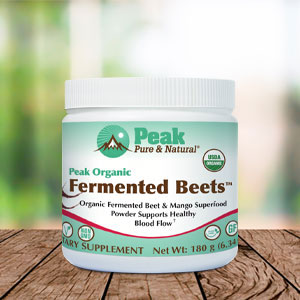Get Easy Health Digest™ in your inbox and don’t miss a thing when you subscribe today. Plus, get the free bonus report, Mother Nature’s Tips, Tricks and Remedies for Cholesterol, Blood Pressure & Blood Sugar as my way of saying welcome to the community!
The mineral behind Parkinson’s brain-robbing proteins

Parkinson’s disease is the second most common neurodegenerative disease in the world after Alzheimer’s disease.
Yet Parkinson’s remains somewhat of a mystery, and research into its causes is ongoing.
I’ve written here before about my dad’s struggle with Parkinson’s, and about research identifying the neurotransmitter serotonin as a marker for early detection of the disease.
Now, new research is taking us in a different direction…
More like Alzheimer’s than we could have guessed
While both Parkinson’s and Alzheimer’s are neurodegenerative brain disorders, Parkinson’s patients have many physical symptoms involving the muscles, including tremors, “mask face” (a stiffening of the facial expression), impaired coordination and difficulty swallowing.
But a shuffling gate is also a symptom of both disorders, and a form of dementia can occur with Parkinson’s disease. In both cases, as well, the disease is progressive, with symptoms getting worse over time.
Until recently, it’s been thought that cell death in the area of the brain that produces dopamine is responsible for Parkinson’s symptoms.
But it turns out that Parkinson’s may have one more thing in common with Alzheimer’s… the damaging effects of metals on the brain…
In 2018, researchers studying Alzheimer’s found that the aggregation of amyloid beta clusters is often dependent on their interaction with metal molecules in the brain, particularly the minerals zinc and copper.
They were able to see that amyloid beta on its own did not produce the worst oxidative damage. It was when it bound itself to copper molecules that the oxidation became considerably worse, causing irreparable damage to brain cells.
And, if you haven’t guessed, recent research believes copper is behind the deteriorating effects of Parkinson’s as well…
Copper helps brain tangles destroy cells
Researchers at the University of Limerick in Ireland have found that a protein known as alpha-synuclein clumps together in the brains of Parkinson’s patients.
Alpha-synuclein is found at presynaptic terminals in the brain, locations that speed up or slow down the release of neurotransmitters.
It is believed that, when this protein clumps together, it slows down the release of dopamine, triggering Parkinson’s symptoms.
The Irish researchers suspected that copper in high concentrations accelerates the clumping of alpha-synuclein proteins.
To see if this was true, they produced the protein artificially. The clumping process took about ten days.
But when they added copper ions to the protein solution, it only took a few hours for entirely different formations to occur — ring-shaped proteins known as oligomers.
The existence of such ring-shaped oligomers, and their cell-damaging effects, are already known. In Alzheimer’s as well as Parkinson’s, oligomers are the precursors to the fibrils and plaque that destroy neurons.
Cut out copper to clean out toxic proteins
None of this is new. A 2013 study showed that copper prevents the brain from cleaning out toxic proteins.
So, is there anything you can do?
First, cut down on copper exposure.
The body needs copper to make melanin, bone and connective tissue. We consume copper from food sources like oysters and other shellfish, whole grains, beans, nuts, potatoes and organ meats (kidneys, liver).
But if your body is inadvertently absorbing it from other sources on top of what’s in your normal diet, that’s where the problems can begin.
Copper pollution occurs in water, air, soil, plants, animals and dust. You can filter your water, especially if you have copper pipes, and avoid cooking with copper pots and pans.
But in the Alzheimer’s research I mentioned above, the scientists didn’t just find that copper was the problem…
They attacked the copper-bound amyloid beta clusters with a plant compound called betanin that gives beetroots their red color. It showed promise as an inhibitor of certain chemical reactions in the brain — and saw it reduce the amount of oxidation by amyloid beta by up to 90 percent.
Lastly, chelation therapy may prove to be a future treatment. EDTA chelation is currently approved as a treatment in the case of lead poisoning and may also help the body excrete copper, iron and zinc.
Here are a few additional tips to cut down unwanted copper exposure:
- Check the label on your multivitamin supplements and deodorants to make sure they don’t contain copper.
- Eat plenty of fruits and vegetables. The copper in these vegetarian foods is less toxic to the body.
- Limit your red meat consumption. The copper in red meat is too easily absorbed by the body.
Editor’s note: Have you heard of EDTA chelation therapy? It was developed originally to remove lead and other contaminants, including heavy metals, from the body. Its uses now run the gamut from varicose veins to circulation. Click here to discover Chelation: Natural Miracle for Protecting Your Heart and Enhancing Your Health!
Sources:
Parkinson’s disease: Copper leads to protein aggregation, study finds — Science Daily
Single-Particle Resolution of Copper-Associated Annular α-Synuclein Oligomers Reveals Potential Therapeutic Targets of Neurodegeneration — American Chemical Society
Study: Death rate from Parkinson’s rising in US — Eureka Alert
α-Synuclein oligomers and clinical implications for Parkinson disease — Annals of Neurology
What is the difference between Parkinson’s disease and Alzheimer’s disease? — Medical News Today
How damaging proteins form — Elsevier














